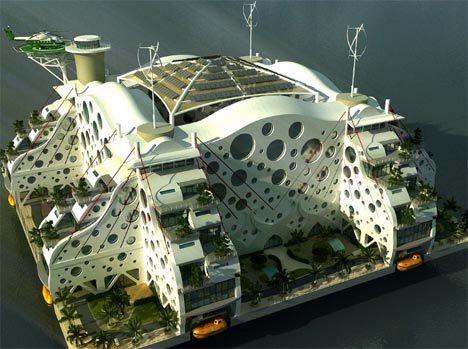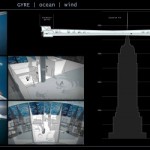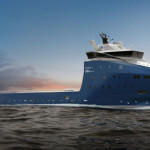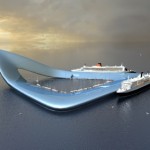By now you probably realize that we here at DSN are more than ready to burn our terrestrial dwellings down in favor of living among sea creatures in some oceanic utopia.
To our list of potential inhabitable salty structures comes a venture from Peter Thiel. Thiel is founder of PayPal, a Google Engineer, and a former programmer for Sun Microsystems. In 2009 with $500,000 of Thiel’s money, The Seasteading Institute wasl launched and dedicated to “creating experimental ocean communities with diverse social, political, and legal systems.” As Wired puts it, “A permanent, quasi-sovereign nation floating in international waters.” You can read the full Seastead Manifesto by Patri Friedman and Wayne Gramlich, founders of the institute.
In 2009 The Seasteading Institute sponsored a design contest. “The contest asked for designs that imagined permanent, stationary structures that would allow for long-term ocean living.” Web Urbanist has photos of the five top entries. I found it difficult to pick a single favorite but I am tending toward the Oasis of the Sea design (above). Vote on your favorites in comments below







The surprising thing about those designs is that, at first glance, they support less dock space, relative to apparent population, than many shore cities. Given that boat and air are the only ways in and out, it should be the opposite. I’ve long thought that a C is the sensible shape for a floating city, where the interior both provides protection for a large number of boats in port, and provides easy transport across the city by means of water taxi.
Russell, it may be possible to have a whole bunch of ships docked underneath the city, with elevators or ladders to get up to “street level.” These things are based off of semi submersibles (oil rigs), so they are pretty high above sea level.
Yeah, but that leaves the moored vessels largely unprotected from ocean swells. It also limits people getting to and from them. That model works for oil platforms, because oil platforms hold only a small number of people, and their johnboats merely come and go to facilitate the change of shifts and supplies. An ocean city will be quite different from an oil platform. The number of residents will be much greater, relative to almost any measure of size. They will want to come and go at will, not in the restricted shifts of platform workers. The floating city will need more and more varied supplies brought in. And the vessels that dock at the floating city will range from private pleasure vessels to small cruise ships.
I wonder if it could be partly submerged under the water and have a dining facility down there… ohh! How fun it would to feel as if you’re eating underwater.
Russell, there are such things as boat lifts to raise the boats out of the water so they will be safe from swells from the ocean.